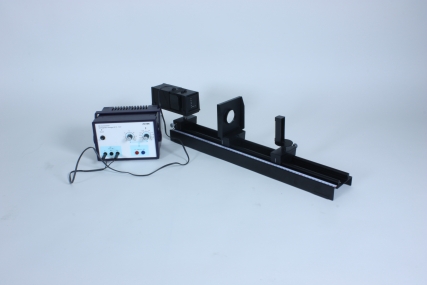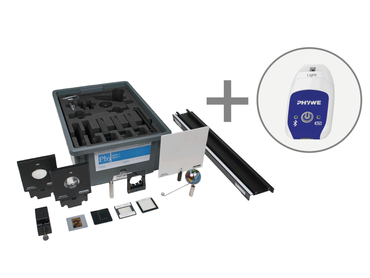Principle
Two experimental variants for the determination of the focal length of a convex lens are suggested, so that at least once the students can discuss the advantages and disadvantages of each. The second variation is less accurate but easier to understand than the first. If the teacher decides to have the students carry out only one variant, then the determination of the focal length by autocollimation is to be preferred.
Benefits
- Multifunctional light box - All-in-one: Can be used for geometric optics on the table, colour mixing and on an optical bench
- Extension with others sets at anytime, no additional light sources needed, recognition value for students
Tasks
How is the focal length of a convex lens determined? Determine the focal length of a convex lens (convergent lens) with two different methods: 1. by autocollimation 2. by uniting parallel light at the focal point.




